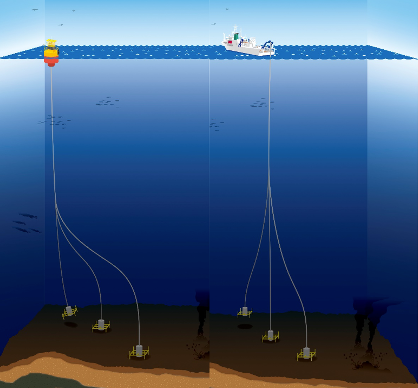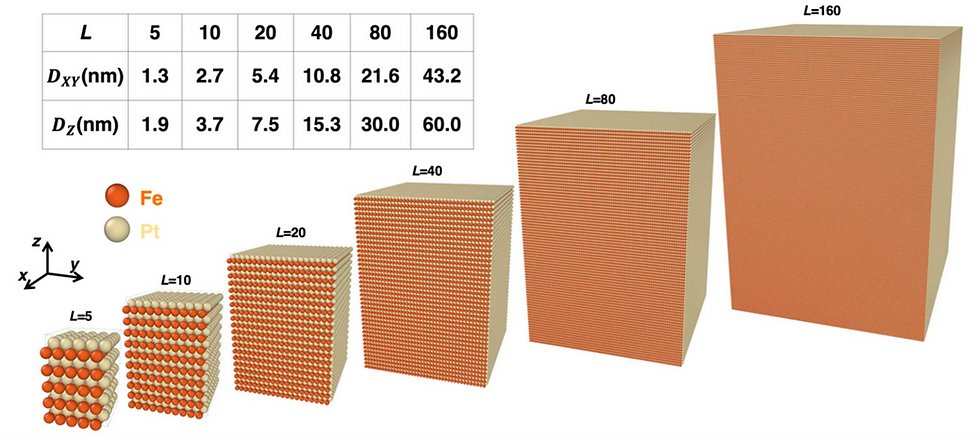
TECHNICAL NOTE
We publish explanatory articles on quantum computer technology, quantum sensor technology, material calculation/simulation that Quemix is researching and developing, and explanatory articles on services provided by Quemix.

In October 2019, the news of quantum supremacy from Google circulated around the world. The news is that quantum computers have solved in just 200 seconds a calculation that would take 10,000 years even with today's supercomputers. Quantum computers excel in two areas: exponential memory and massively parallel algorithms, which I will explain here.
2023/07/10
by Yu-ichiro MATSUSHITA
I will focus on and explain another factor that makes quantum computers powerful: massively parallel algorithms. I have long said that quantum computer algorithms are an unveiling of a right solution from all other possibilities, and I will explain the essence of the quantum computer algorithm.

by Yu-ichiro MATSUSHITA
2023/08/01
【List of articles】

The Q-e scheme, a mathematical model that expresses the reactivity ratio of vinyl monomers in terms of two parameters, can quantitatively predict the reactivity ratio for unknown monomer pairs, but several drawbacks have been pointed out. Recently, we have derived the intrinsic Q-e scheme as an improvement. This scheme eliminates the shortcomings of the Q-e scheme, improves the prediction accuracy of reactivity ratios, and, for the first time, succeeds in determining the Q-e values of polymer radicals separately from those of monomers. The intrinsic Q-e scheme is described in the following.
by Susumu KAWAUCHI
2023/08/18
Each title is a link to the article.

The next approximately 30 years from now are referred to as the era of NISQ (noisy intermediate-scale quantum device), as shown in the figure. In the widely used VQA (Variational Quantum Algorithm), the variational circuit can only optimize quantum states within its specified range. However, Quemix's development of PITE®️ (Probabilistic Imaginary-Time Evolution) enables true quantum optimization and holds the potential to demonstrate its usefulness in the post-NISQ era.
by Taichi KOSUGI
004. Will the NISQ era really arrive?
2023/08/25

Quemix proposed Probabilistic Imaginary-Time Evolution (PITE®️) as a general non-variational algorithm that does not require the use of classical computers. Since PITE®️ is a general method, it can also be applied to fields other than quantum chemistry. PITE®️ holds promise as a standard technology in the era of full-scale quantum computers that will arrive in the near future.
by Taichi KOSUGI
2023/09/19
A quantum sensor is a device that utilizes the quantum properties of matter to perform environmental sensing. Its key characteristics include high sensitivity, operation at room temperature, and a wide dynamic range. It doesn't require intricate control techniques and is expected to have an early societal implementation within the field of quantum technology.

by Yu-ichiro MATSUSHITA
2023/09/26
007. Quantum Advantage of PITE ®️
In the realm of quantum chemical computation, the question of whether a quantum computer outperforms a classical computer depends on the specific problem. For tasks like real-time dynamics of Hamiltonians (e.g., atoms and molecules), quantum computers offer exponential advantages. These problems are within the BQP complexity class and can be efficiently simulated in polynomial time on a quantum computer. However, when it comes to finding the ground state of Hamiltonians, a QMA-class problem, it remains a computationally intensive task, even on a quantum computer. In summary, quantum computers excel for certain problems, offering exponential advantages, but not all problems benefit equally from quantum computing.

by Hirofumi NISHI
2023/11/01
What are the noteworthy features in machine learning? Describes the Channel Attention mechanism, which improves the ability to process and understand complex information by selectively focusing on specific features or parts of input data. This is a must-see for anyone interested in machine learning or the applications of machine learning.

by Gekko Budiutama
2023/11/28
A quantum computer implementing QEC consisting of a large number of neutral atoms, fault-tolerant quantum computation, was recently reported by “Logical quantum processor based on reconfigurable atom arrays”, Bluvstein et al., Nature (2023). According to it, up to 280 physical qubits are constructed from arrays of relocatable neutral atoms, and entanglement between up to 48 logical qubits is generated and observed using a regionalized architecture.

by Taichi KOSUGI
2023/12/25
First-principles calculations are used in a variety of fields, including research and development in industry. Junichi Iwata, the developer of Quemix's cloud-based materials calculation platform "Quloud," will explain the application of first-principles calculations.

by Junichi IWATA
2024/1/10
We explore innovations in diffusion models with quantum neural networks (QNNs) that introduce channel attention based on the latest research. With the evolution of generative AI, we will explain the potential of quantum computing in image and video generation. We provide a detailed introduction to the mechanisms of high-quality image generation and effective noise removal, and provide a perspective on future technology.

by Gekko Budiutama
2024/7/23
In this trilogy, we will explain magnetic material simulation using the product Quloud-Mag. In Part 1, we will explain the expectations for simulation in the development of magnetic materials and what kinds of magnetic material simulation technologies have been developed to date.

by Yu-ichiro MATSUSHITA
2024/9/15
In this trilogy, we will explain magnetic material simulation using the product Quloud-Mag. In the second part, we will explain the differences between conventional magnetic material simulation and the "multiscale simulation" provided by Quloud-Mag.

by Yu-ichiro MATSUSHITA
2024/9/15
In this trilogy, we will explain magnetic material simulation using the product Quloud-Mag. In Part 3, we will introduce some actual simulation examples using Quloud-Mag.

by Yu-ichiro MATSUSHITA
2024/9/15
In this explanatory article, we will explain what is MD calculation? What can you do with MD calculations? We will explain first-principles MD calculation, machine learning MD calculation, and On-The-Fly MD calculation. We will also explain what you can do by running On-The-Fly MD calculations implemented in Quloud.

by Yu-ichiro MATSUSHITA
2024/10/02
In Part 2, based on the content of Part 1, we will discuss what On-The Fly MD calculation is in the first place. We will explain the challenges of conventional machine learning MD that are solved by using On-The-Fly MD.

by Yu-ichiro MATSUSHITA
2024/10/02
This article is divided into two parts, focusing on applications to materials and fluid dynamics, to explain first-quantized Hamiltonian Simulation (HS) and the advection-diffusion-reaction equation. In the first part, we will explain what first-quantized HS is and discuss why and to what extent it can be accelerated on a quantum computer. We will also introduce some of the challenges faced when applying it to materials calculations.

by Xinchi HUANG
2024/10/18
In Part 2, based on the content from Part 1, we explain what the advection-diffusion-reaction equation is and introduce the quantum solver using PITE®. Additionally, we compare it with other quantum algorithms and discuss its application in fluid calculations as well as future challenges.

by Xinchi HUANG
2024/10/18
Recommended Technical Note

2024/10/18 by Xinchi HUANG This article is divided into two parts, focusing on applications to materials and fluid dynamics, to explain first-quantized Hamiltonian Simulation (HS) and the advection-diffusion-reaction equation. In the first part, we will explain what first-quantized HS is and discuss why and to what extent it can be accelerated on a quantum computer. We will also introduce some of the challenges faced when applying it to materials calculations.

2024/10/02 by Yu-ichiro MATSUSHITA In this explanatory article, we will explain what is MD calculation? What can you do with MD calculations? We will explain first-principles MD calculation, machine learning MD calculation, and On-The-Fly MD calculation. We will also explain what you can do by running On-The-Fly MD calculations implemented in Quloud.

2024/09/15 by Yu-ichiro MATSUSHITA In this trilogy, we will explain magnetic material simulation using the product Quloud-Mag. In Part 1, we will explain the expectations for simulation in the development of magnetic materials and what kinds of magnetic material simulation technologies have been developed to date.

